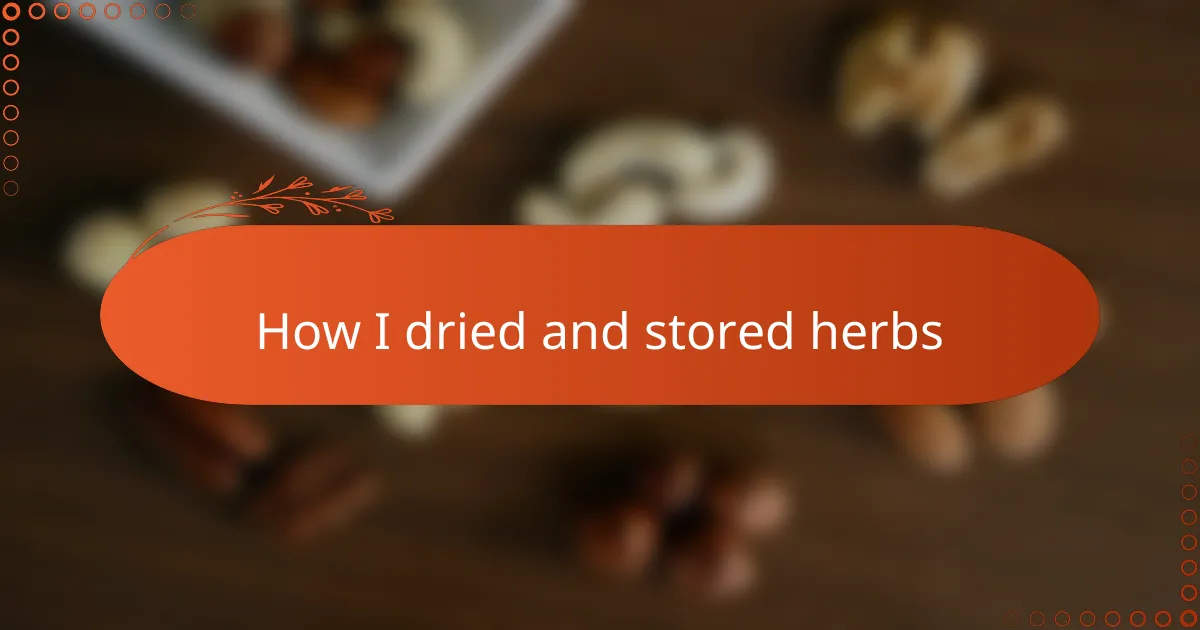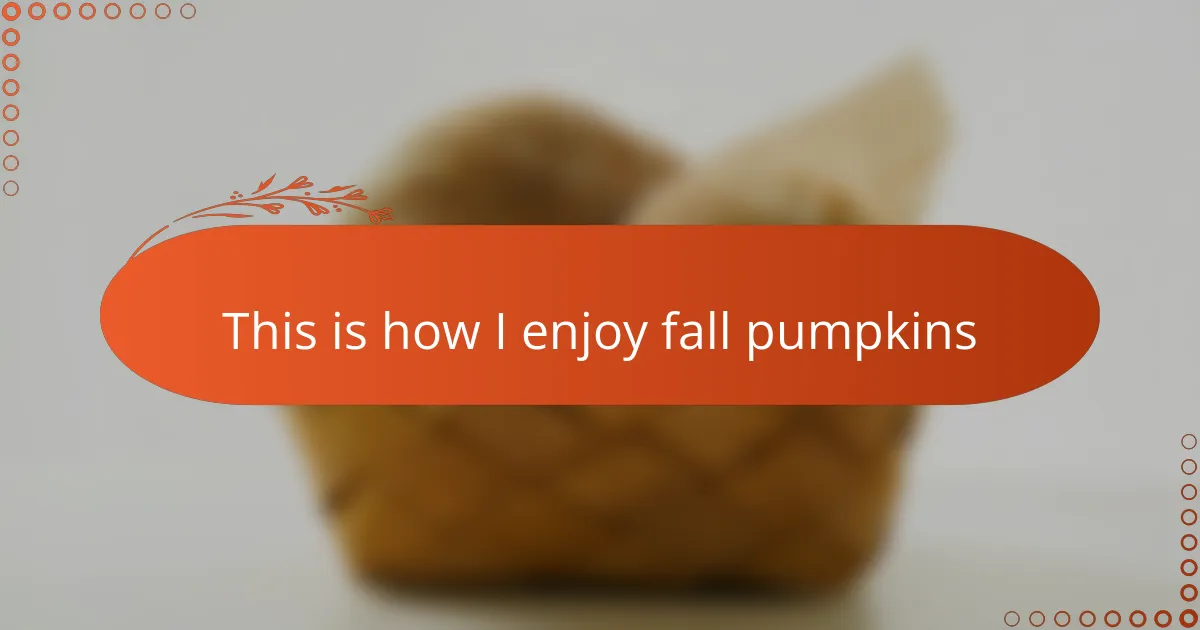Key takeaways
- Harvest herbs just before flowering for optimal flavor preservation and intensity.
- Use gentle drying methods, like air drying or low-temperature oven drying, to maintain essential oils and aroma.
- Store dried herbs in airtight containers in cool, dark places to prevent degradation and loss of flavor.
- Incorporate dried herbs earlier in cooking to enhance flavor depth and intensity compared to fresh herbs.
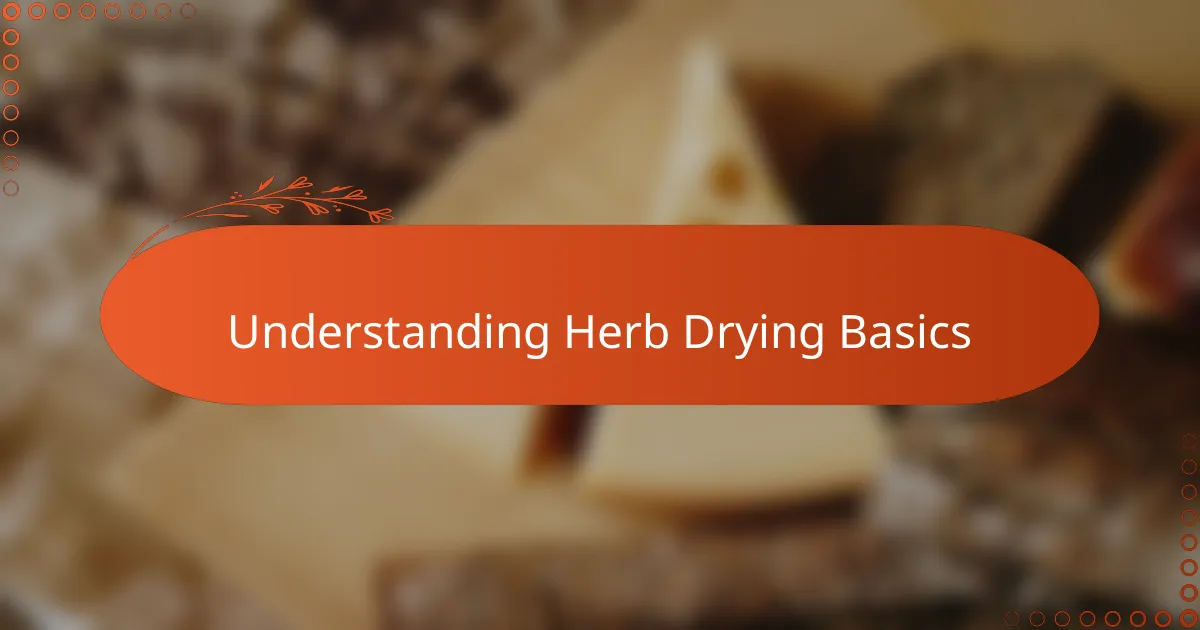
Understanding Herb Drying Basics
Drying herbs might sound simple, but there’s a bit of art to it that I only appreciated after my first failed batch. Did you know that the timing of harvesting—usually just before the plant flowers—can significantly impact the flavor? I learned the hard way that picking too late means losing some of those vibrant tastes I was aiming to preserve.
One thing I pay close attention to now is keeping the herbs out of direct sunlight during drying. Early on, I hastily tossed them into the sun, hoping to speed things up, only to find their color faded and the aroma dull. It made me realize that slow and steady drying keeps the essential oils intact, which is what makes herbs so flavorful in cooking.
Have you ever wondered why some dried herbs crumble to a fine powder while others stay leafy? This difference comes down to moisture content and how gentle the drying process is. Through trial and error, I discovered that hanging small bunches upside down in a warm, dry spot works best for me, giving me crisp leaves that hold their essence without turning brittle.
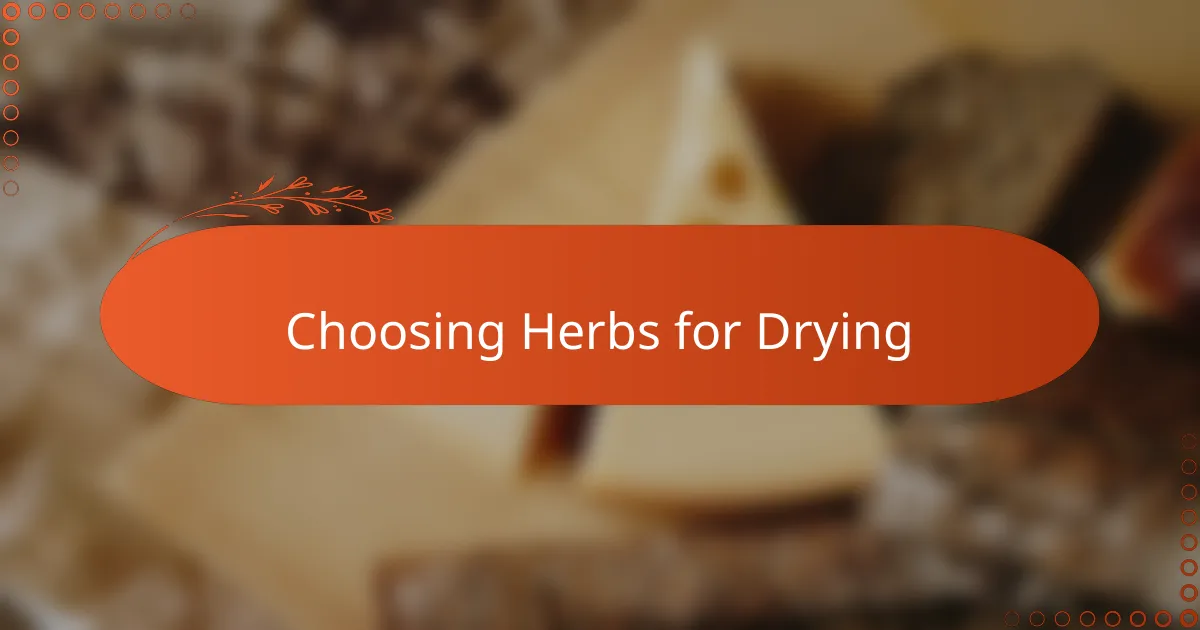
Choosing Herbs for Drying
When I first started drying herbs, I quickly realized not all herbs are created equal for this process. Some, like thyme and rosemary, are hardy and dry beautifully without losing their flavor, while delicate herbs like basil or cilantro can be a bit more finicky. Have you noticed how some herbs just seem to wilt or turn mushy when dried? That’s why choosing the right type makes all the difference.
I often pick herbs that have sturdy stems and thick leaves because they tend to hold up better during drying. For instance, oregano and sage have a robustness that makes them reliable in my kitchen stash. On the other hand, herbs with high moisture content require extra care or sometimes work better frozen, which I learned the hard way after a soggy drying attempt.
The moment I grasped the importance of harvesting herbs at the right time, just before they bloom, was a game changer. It’s amazing how the flavor intensity peaks there, making the dried herbs so much more vibrant. I’ve found that paying attention to this simple step not only preserves taste but also makes my cooking feel truly rewarding. Have you ever tried seasoning your dishes with herbs harvested too late? The difference in taste is something you don’t want to overlook.
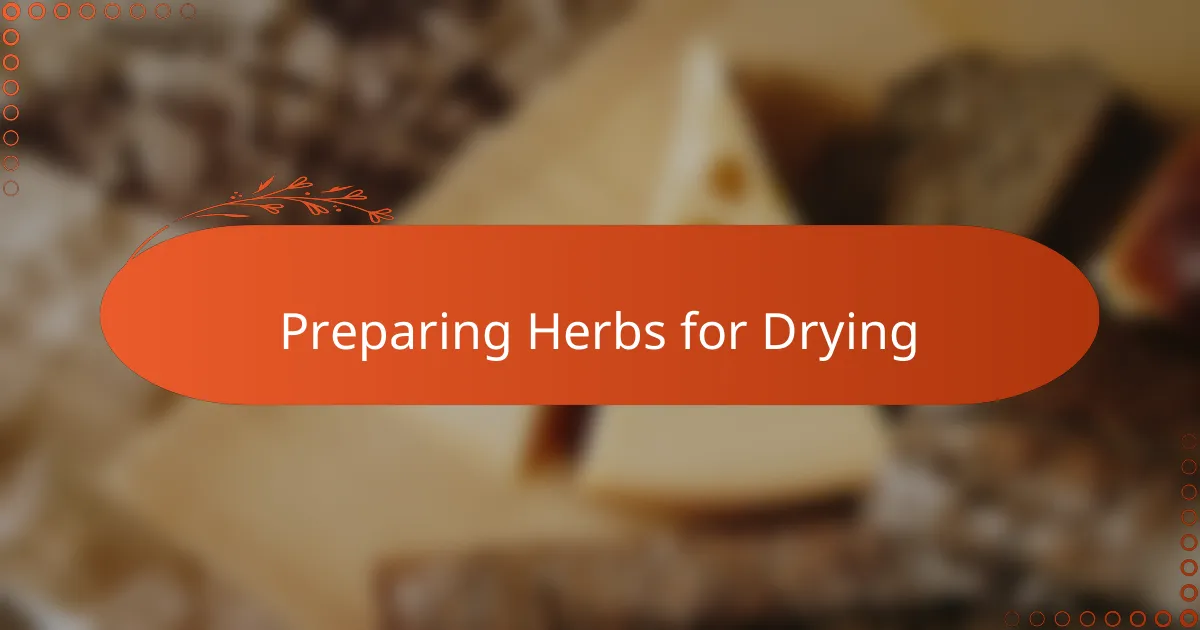
Preparing Herbs for Drying
Before I dry my herbs, I always make sure to give them a gentle rinse in cool water to wash away any dirt or little critters. It’s tempting to skip this step, but I learned from a messy experience that a clean bunch means better flavor and no unwelcome surprises later.
After washing, I lay the herbs out on a clean towel and let them air dry completely. I’ve ended up with moldy bunches before by rushing this part—so patience here really pays off. Have you ever dried herbs only to find them soggy and spoiled? Trust me, letting them dry well beforehand is a game changer.
I also take a moment to remove any damaged or yellow leaves before drying. It might seem small, but those leaves can affect the overall taste and appearance. Over time, I’ve found that trimming the stems to a uniform length helps the herbs dry evenly, making the whole process smoother and more satisfying.
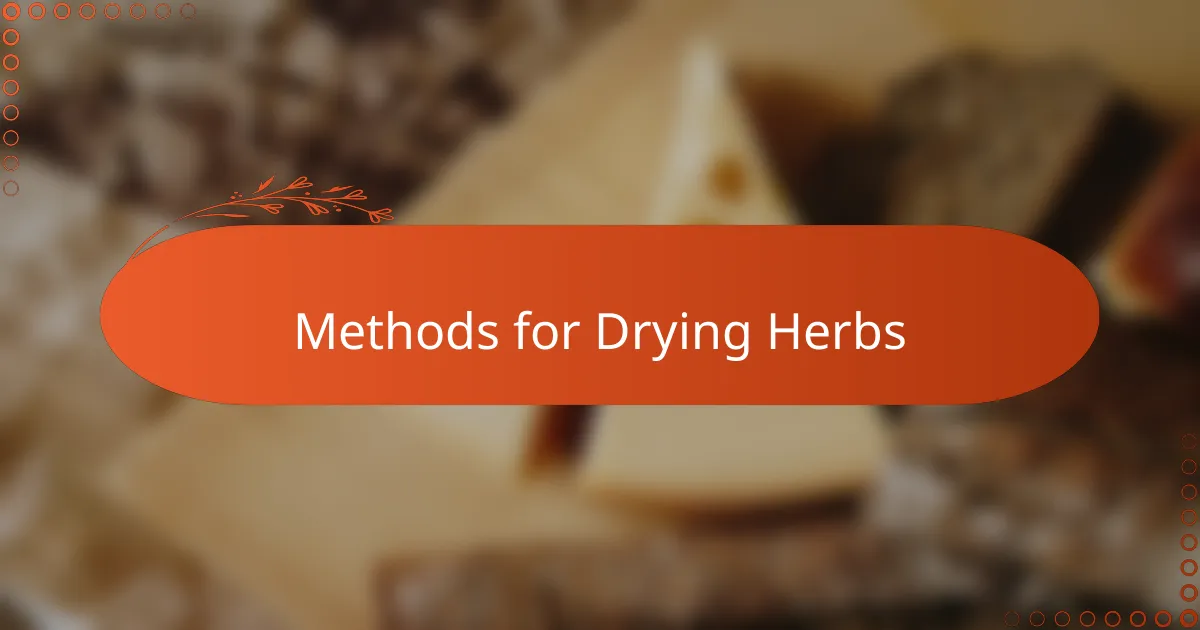
Methods for Drying Herbs
One of the methods I swear by is air drying, where I tie small bunches of herbs and hang them upside down in a warm, well-ventilated room. I remember the first time I tried this—it felt almost like a ritual, watching those little bundles slowly transform over days. It takes patience, but the reward? Intensely aromatic herbs that hold their character beautifully.
Sometimes, when the weather won’t cooperate or I need quicker results, I turn to my oven’s lowest setting. Carefully spreading the herbs on a baking sheet, I keep a close eye so they don’t crisp up too fast. Have you ever burned your herbs this way? I sure have, and that smoky bitterness taught me to be gentle and vigilant.
For a bit of a modern twist, I’ve also experimented with using a dehydrator, which always surprised me with how evenly and efficiently it dries herbs without compromising their flavors. It’s like having a personal drying chamber at home, especially handy when I’m preserving larger batches. Have you tried one? It’s a game changer for serious herb lovers.
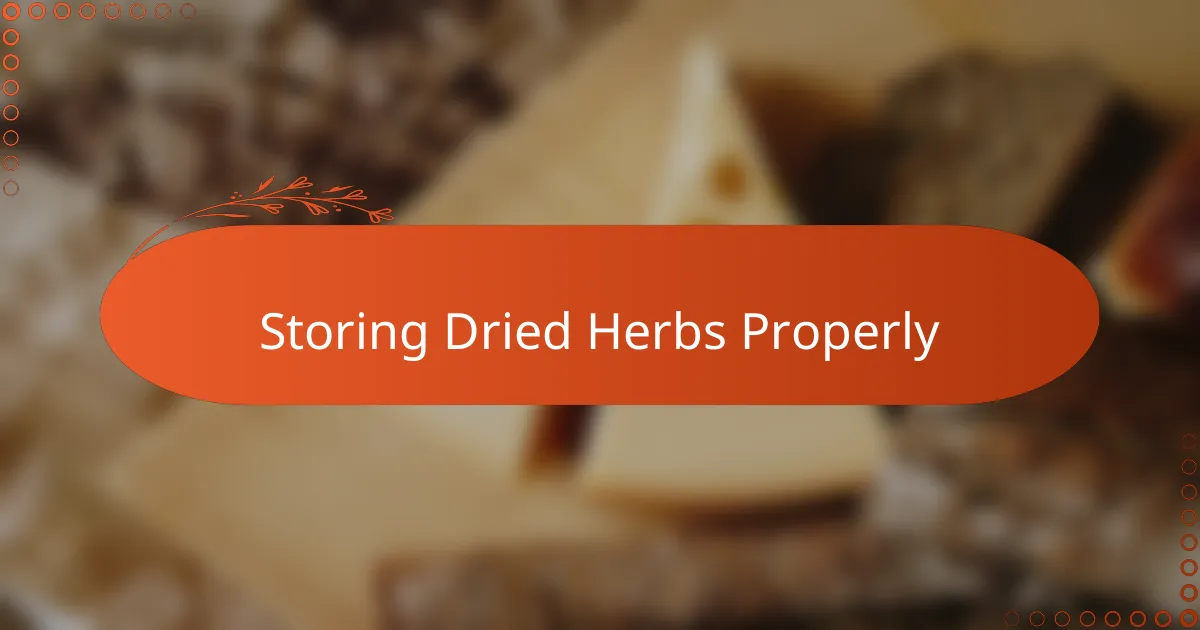
Storing Dried Herbs Properly
Proper storage of dried herbs is crucial if you want to keep their flavor intact over time. I learned this the hard way after leaving some herbs in a clear jar near the window—I found they lost their vibrant aroma within weeks. Now, I always opt for airtight containers kept in a cool, dark place to protect those delicate oils.
Have you ever opened a jar of dried herbs and wondered why they smelled so faint or tasted flat? That usually happens when moisture sneaks in, causing herbs to degrade or even grow mold. From my experience, using glass jars with tight lids or resealable bags and avoiding humidity in your storage area really makes a difference.
One simple trick I swear by is labeling each container with the herb name and drying date. It helps me keep track, so I use the oldest herbs first and don’t let anything linger too long. Plus, it gives me a sense of accomplishment seeing my herb stash organized and ready for any recipe.
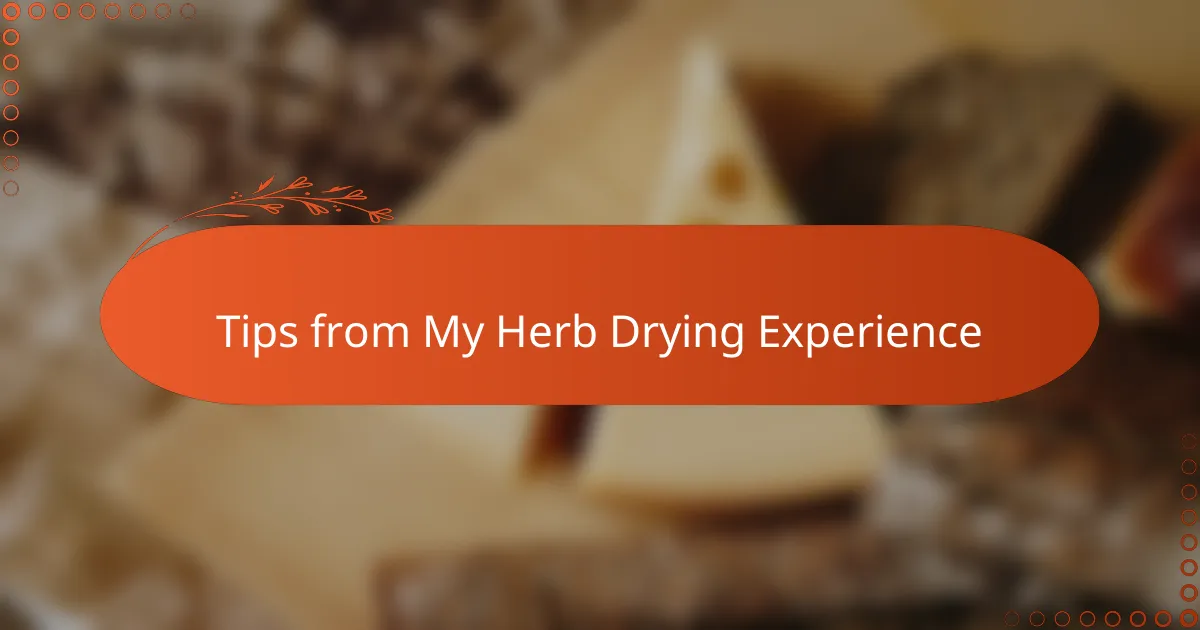
Tips from My Herb Drying Experience
One tip I can’t stress enough is to keep the drying herbs well-ventilated. I once tried drying a big bunch in a cramped cupboard, thinking it would save space—but the lack of airflow made some leaves moldy. Have you ever felt that frustration of finding your hard work ruined by a little oversight? Trust me, a breezy spot makes all the difference.
Another lesson I learned the hard way involves patience. Early on, I kept checking my herbs too often and sometimes pulled them down too soon, only to realize they weren’t fully dried inside. It felt like a waste, but now I remind myself that good things take time—waiting pays off with herbs that store perfectly and taste vibrant.
Lastly, don’t underestimate the power of small bunches. I used to think tying large bundles would speed things up, but instead, it slows drying and invites rot. Have you ever ended up cutting away spoiled parts from your dry batch? Splitting herbs into petite bundles gives them space to breathe and dries them evenly, making the whole process smoother and more rewarding.
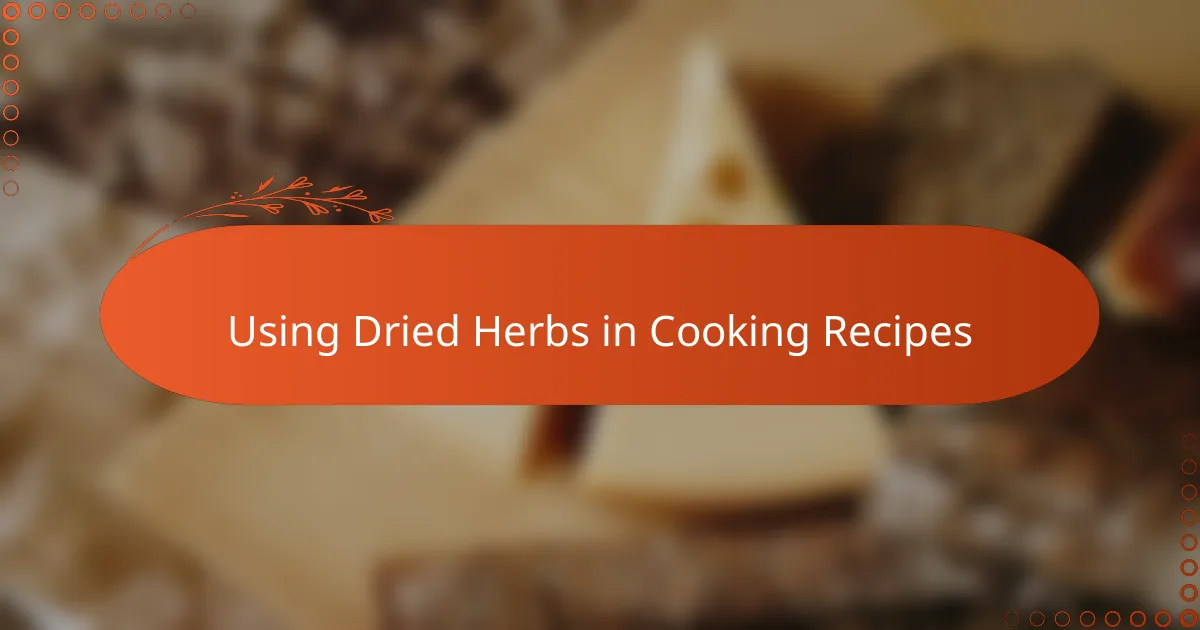
Using Dried Herbs in Cooking Recipes
When I first started cooking with my dried herbs, I quickly realized that they pack a much more concentrated punch than fresh ones. Have you noticed how a little sprinkle of dried thyme or rosemary can transform a dish? That intensity means I often use about half the amount compared to fresh herbs, which not only saves my stash but also lets the flavors shine without overpowering the recipe.
One thing that really changed how I approach seasoning is adding dried herbs earlier in the cooking process. I learned this after a few attempts where the herbs were just tossed in at the end, leaving their flavor timid. Simmering dried herbs in sauces or soups allows their aromas to bloom slowly, creating a depth I find truly satisfying.
Do you ever wonder if dried herbs can be just as versatile as fresh? From salads to roasted veggies, they offer a ready-to-go option when fresh isn’t available. I often sprinkle some dried oregano on roasted potatoes or mix dried basil into marinades. It’s a small habit that adds a burst of homegrown goodness, even when the garden is taking a break.
